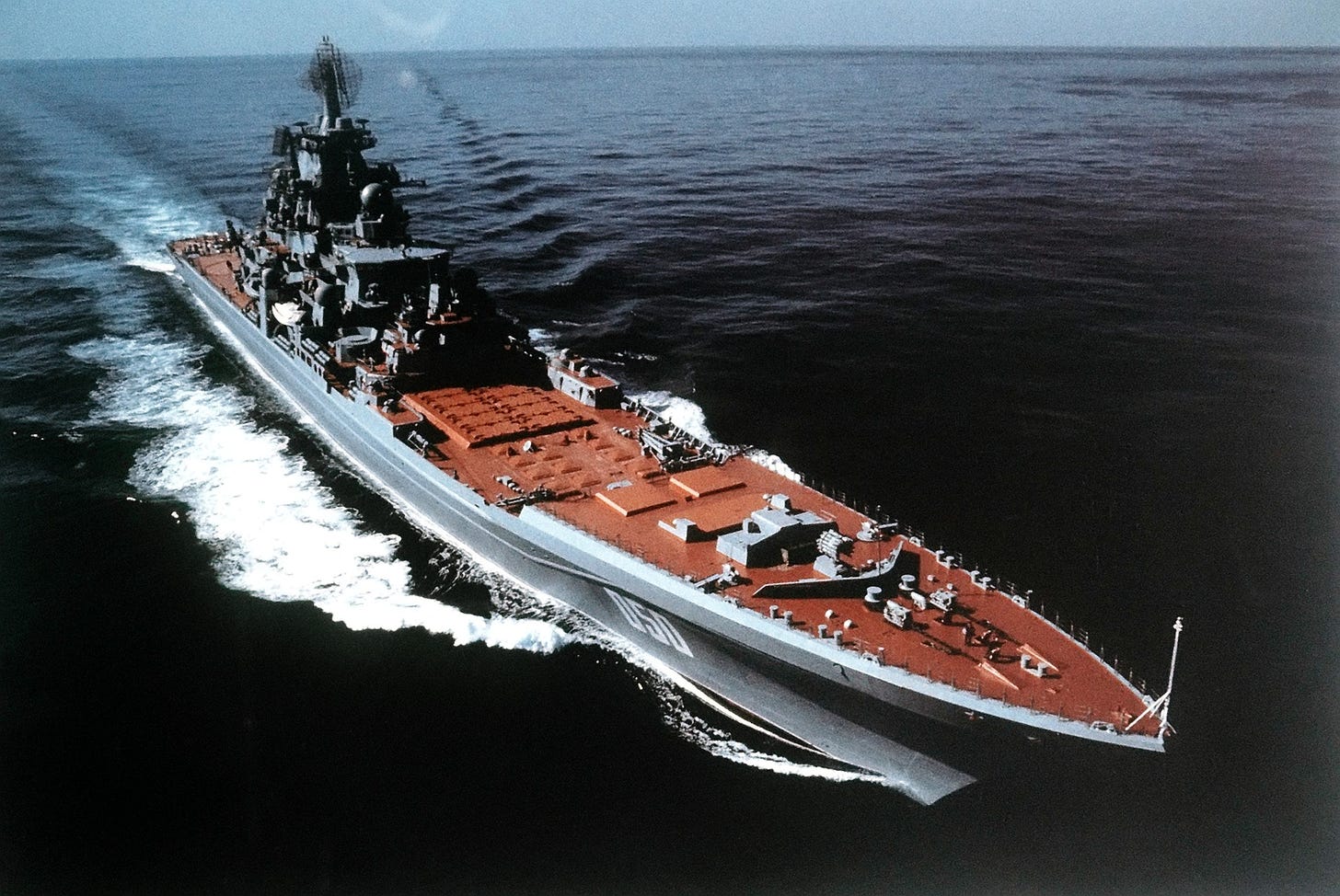Russia’s Twenty-First-Century Naval Strategy—Combining Admiral Gorshkov with the Jeune École
guest contributor: Johannes Riber, Royal Danish Navy
A starboard bow view of the Soviet Kirov Class nuclear-powered guided missile cruiser FRUNZE underway. (Soviet Military Power, 1986. published by Defense Intelligence Agency.) photo courtesy: United States Department of Defense
editor: Will Beaumarchais
Commander Johannes Riber is a career officer in the Royal Danish Navy. He holds an MA in internation- al security studies from the University of Leicester, United Kingdom, and is a PhD fellow at the Uni- versity of Copenhagen, Denmark. He most recently published a chapter on Danish naval strategy as a part of the Corbett Centre for Maritime Policy Stud- ies Series, King’s College London
Russia’s Twenty-First-Century Naval Strategy—Combining Admiral Gorshkov with the Jeune École
After the Cold War, the Russian navy quickly disintegrated; new-construction programs were postponed or canceled, while many existing units were abandoned or provided only limited maintenance.1 However, over the course of Vladimir V. Putin’s political ascendancy since 1999, the Russian navy slowly has been resurrected. This development escaped much international notice—until September 2015, when Russia intervened in the Syrian civil war. As part of that intervention, Russia’s Caspian Flotilla launched its first-ever cruise-missile at- tack, firing twenty-six missiles at targets over 750 miles away.2 Two months later, a Russian submarine similarly fired missiles into Syria from the Mediterranean, and other Russian submarines repeated those attacks in 2017.3 Most recently, the Black Sea Fleet has fired cruise missiles into Ukraine.
The development of cruise missiles, together with other naval improvements and innovations, has raised concerns in the West about the resurrection of Russian sea power. Both the reestablishment of the U.S. Navy’s Second Fleet— responsible for the North Atlantic—and the reopening of the military part of Keflavík Airport in Iceland are clear reactions to Russia’s naval developments and its worrying political posturing.
While the Russo-Ukrainian war since February 2022 has called into question Russian military abilities in general, including at sea, it would be careless to assume—regardless of the future course of that conflict—that Russia will not continue to be a significant security factor in the future. Yes, Russia runs the risk of total defeat in Ukraine, yet that only underlines this article’s main observation: the similarities between France after the Franco-Prussian War of 1870–71 and the Russia of today, each squeezed in a multipolar world, with a poor economy and a diminishment of its industrial power.
Keep reading with a 7-day free trial
Subscribe to The Intelligencer to keep reading this post and get 7 days of free access to the full post archives.

